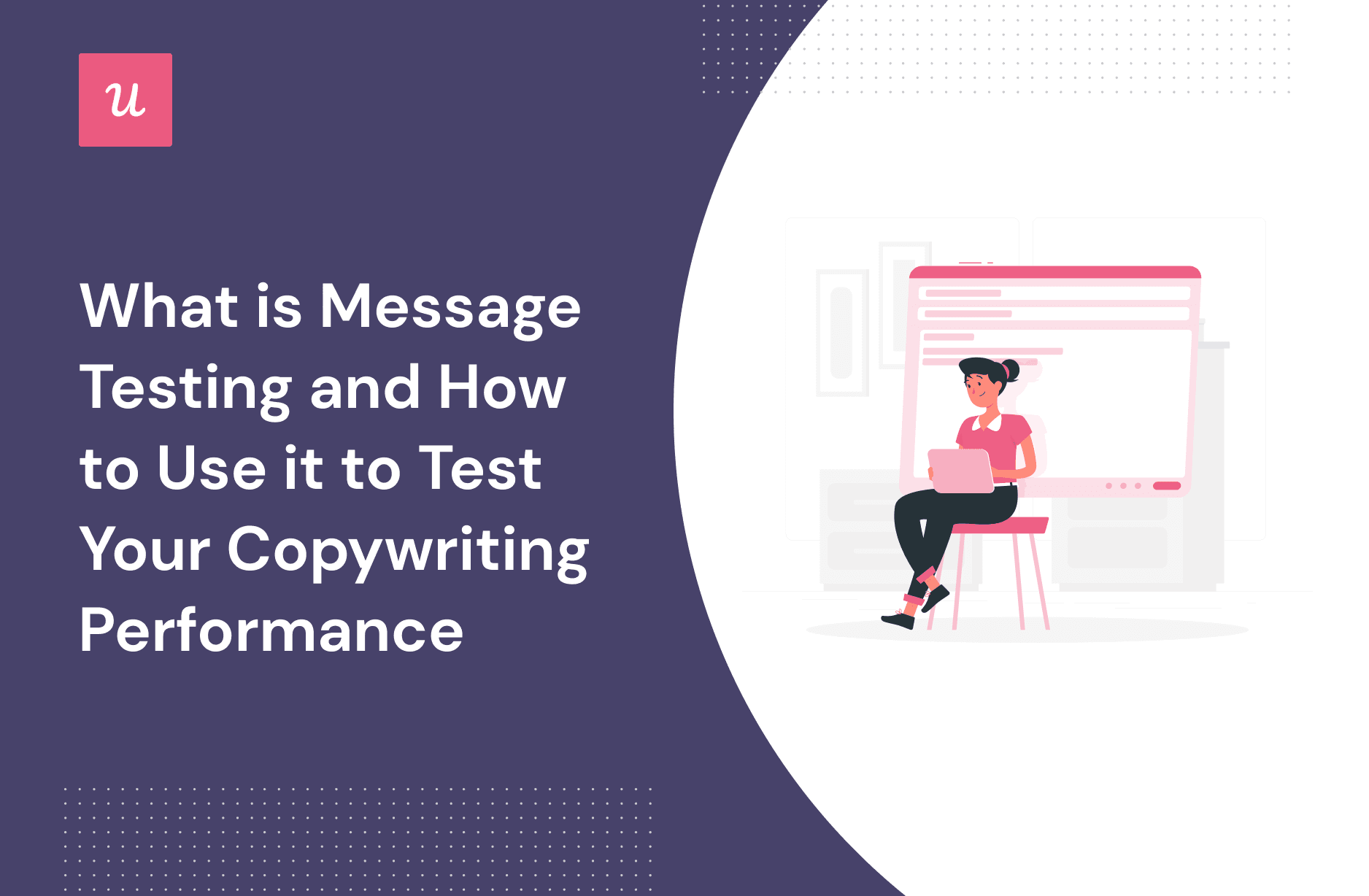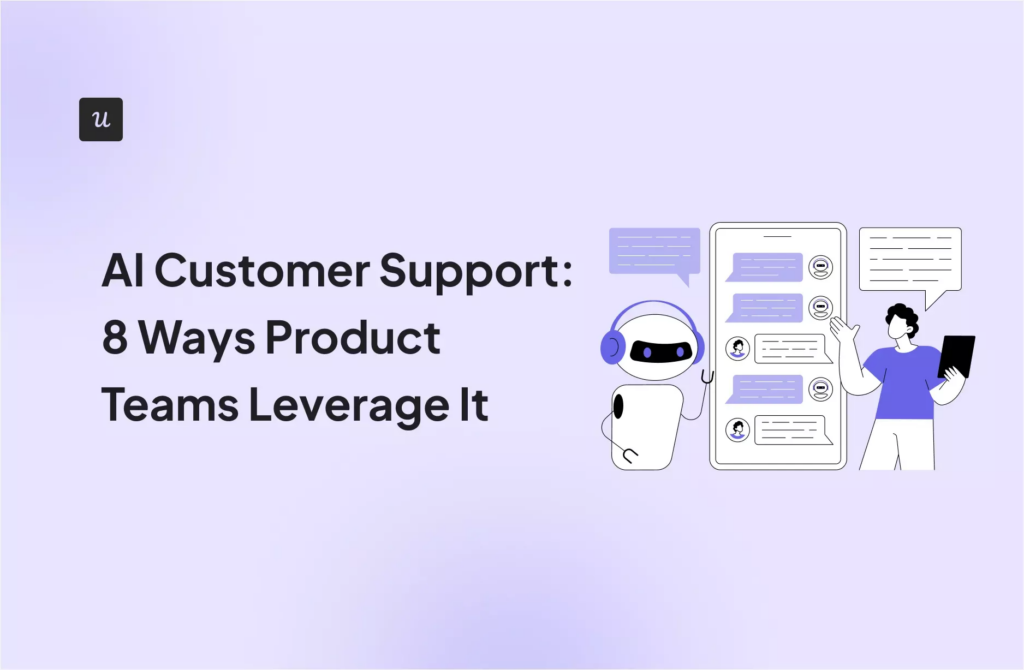
What is Message Testing and How to Use it to Test Your Copywriting Performance?
Try Userpilot Now
See Why 1,000+ Teams Choose Userpilot

What is message testing in SaaS?
Message testing is a type of analysis that aims to find out how the product’s target market is responding to its marketing messages.
This includes the copy on your landing pages/website, emails, and even product ads. Just like your marketing campaigns and product features that are tailored to your customers, message testing ensures your words are relevant to your audience and optimized for maximum impact.
Why is message testing important?
Simply put, message testing is important because it provides insight into how customers relate to your messages and identifies ways in which to improve them.
A big part of your business success depends on how well product messaging converts users. Your conversion rates will suffer if the language you use doesn’t resonate with customers or help them identify you as a solution.
Also, since message testing research usually involves in-depth interviews with target customers as well as surveys of customers’ perceptions of your messaging, it helps you refine your messaging and lets you:
- Get a clear understanding of your target customers. From values to pain points to goals, you’ll be able to learn more about each person and how they describe these concepts in their own words. Using this information, you can create messages that resonate with your user personas.
- Put your best messaging forward and to the right customer type. By testing your existing messages among your existing customers, you can determine what language or messaging strategy is best for your various customer segments.
What are different methods of message testing?
To get started with message testing, it is best to use a mix of qualitative and quantitative methods.
Here are several methods to use for your message testing process.
Message testing tools
With these tools, you can recruit a panel of your target audience and test a page, a section of your website, or an email message.
Once you’ve formulated great message testing questions, the panelists will walk through your website and give feedback on specific parts.
Wynter
Wynter is a user testing tool designed to help you get your marketing message and copywriting right.

It works like this:
- You select a page/section of your website or area of your email messaging, let’s say the subject lines to test.
- Wynter will then assemble a focus group of your target audience and formulate great messaging questions to guide them.
- The focus groups will then walk through your messaging and provide you with insights into how and where you need to work on.
FiveSecond Test
Unlike Wynter which creates focus groups out of your target audience and gives them ample time to look through your messaging, the FiveSecond test tool gives the selected audience (who are not necessarily your potential customers) a 5-second flash of whatever page you’re testing, i.e, your website’s homepage.

You’ll be able to see how easy or difficult it is for visitors to comprehend what your company is and who your target market is. You can use this method to check the clarity of your messages without necessarily getting deep insights into your website’s copy.
On-site polls
On-site polls are pop-ups with questions that appear during a customer’s journey through your site.
You can create on-site polls using tools like Hotjar and Qualaroo.

These on-site polls work in providing the richest insights because when people are guaranteed anonymity they tend to give very honest feedback on whatever you’re testing.
The problem however is that only a small set of your website’s visitors will ever respond to surveys so the opinions you get may not be fully representative of how the majority feels.
Heat maps
Heat maps are a graphical representation of data that shows user interactions on your website such as how far users scroll a page, whether they click an important button, what parts they spend the most time on, what point they drop off, etc.

Heat maps can really help you determine which parts of your messaging are effective and which are not. For instance, if you notice from your heat maps that most people drop off at a particular point, it may be wise to rewrite or remove those sections.
Website/product analytics
Website/product analytics tools can help you in a similar way to heat maps; they can quantitatively tell you engagement rates and exit rates on given pages.
With Userpilot you can get valuable insights into how your customers are using your product.
You can even create segments based on user behavior for better understanding.

With Userpilot’s native mobile SDK, you can also onboard and engage mobile app users by creating personalized messaging, push notifications, and surveys, allowing you to effectively test your messages on these increasingly important platforms.
When you have the data, you can do A/B testing to see what’s working and what’s not.

What are some common questions for message testing?
You need to ask the right questions in your message testing because the type of questions you ask will determine the type of feedback you receive.
When conducting messaging tests, you should ask questions that address the LIFT model.

This LIFT model was created in 2009 by Chris Howard. It is a framework that enables you to analyze your customers’ online experiences on your web and mobile platforms.
These factors are:
- Value proposition: this shows your importance and speaks to the benefits users will derive from your product.
- Relevance: how relevant is your value proposition to users’ needs?
- Clarity: Can visitors quickly tell who you are without doing extensive research into your brand?
- Urgency: Is your product something that drives urgency? There is internal urgency that customers feel during periods like Black Friday sales, and there is external urgency that you can create with your messaging by using compelling CTAs and offering limited offers to get them to convert.
- Anxiety: What could be making prospects second guess your product and what can be done to build trust and credibility?
- Distraction: Are there parts of your messaging that could distract visitors from reaching their final goal? These could be invasive pop-ups.
5 great examples of message testing questions
These are examples of what good message testing questions look like, based on the LIFT framework above.
1. Is there a demand for what you’re proposing?
This falls under the value proposition factor which is also the center of the six concepts.
It will allow you to determine whether or not your product/solution is actually meeting a customer’s need. By using the data, you can craft a value proposition statement that speaks directly to a need and increases sales.
2. Would your web page resonate with what your visitor expected to see?
This is the part of your research that focuses on relevance.
Does your messaging and design match if the customer saw your ad on the Internet or clicked on the link to find more information about your product/services?
3. Does your website clearly communicate the value proposition and call-to-action (CTA)?
Clarity is an important factor for your marketing messages. How clear is it to visitors what your company does?
You won’t be able to convert them to buyers if you don’t make your messages clear and simple.
4. Do you have any indication on your website that action needs to be taken now?
In order to get users to convert, creating a sense of urgency is vital. How well do your marketing messages convey this?
5. What might be your visitor’s hesitations about taking the conversion action?
By doing so, you will be able to identify which parts of your messaging, whether copy or design, might be hampering or slowing the conversion process.
Upon discovering these, you can fix your message flow to eliminate visitors’ anxieties and doubts.
Conclusion
The first time someone lands on your site, your messaging has the potential to either convince them that you are the right solution or leave them with doubts.
Whether you’re running A/B tests to different audience segments or doing in-person interviews, it’s crucial to use the right strategy/language for the target customer. This is where message testing comes in.
Testing your messages will enable you to identify what can be improved for maximum conversion.
Ready to segment your customers and get insight into how they interact with your product? Get a Userpilot demo and see how you can easily get it code-free.







